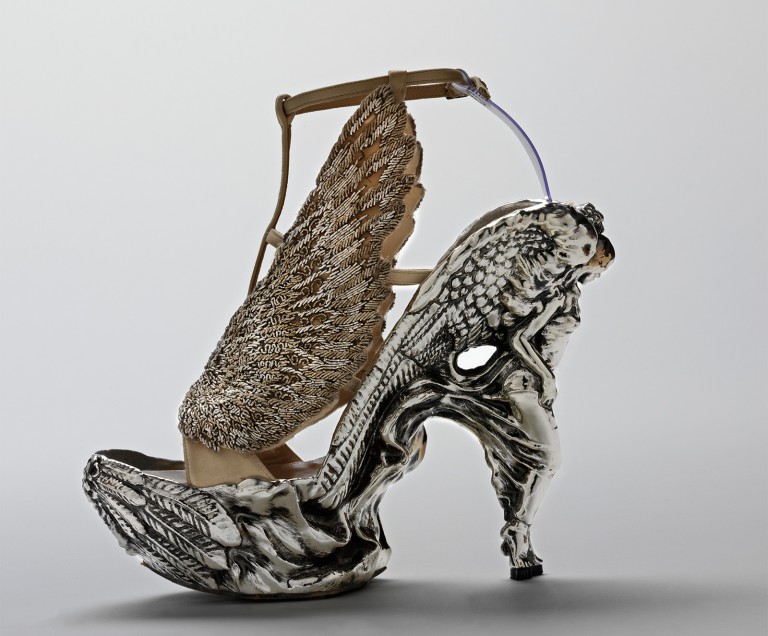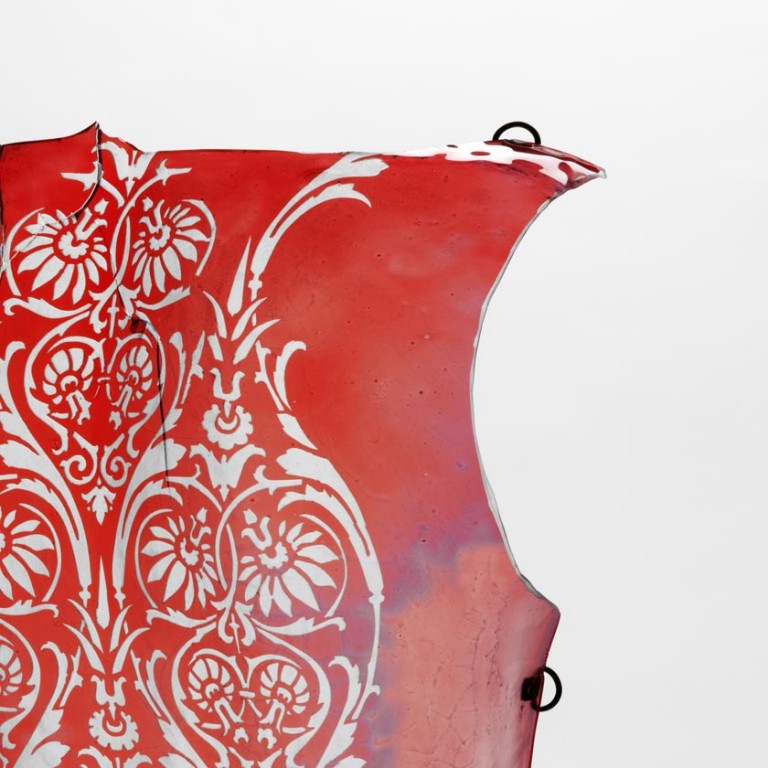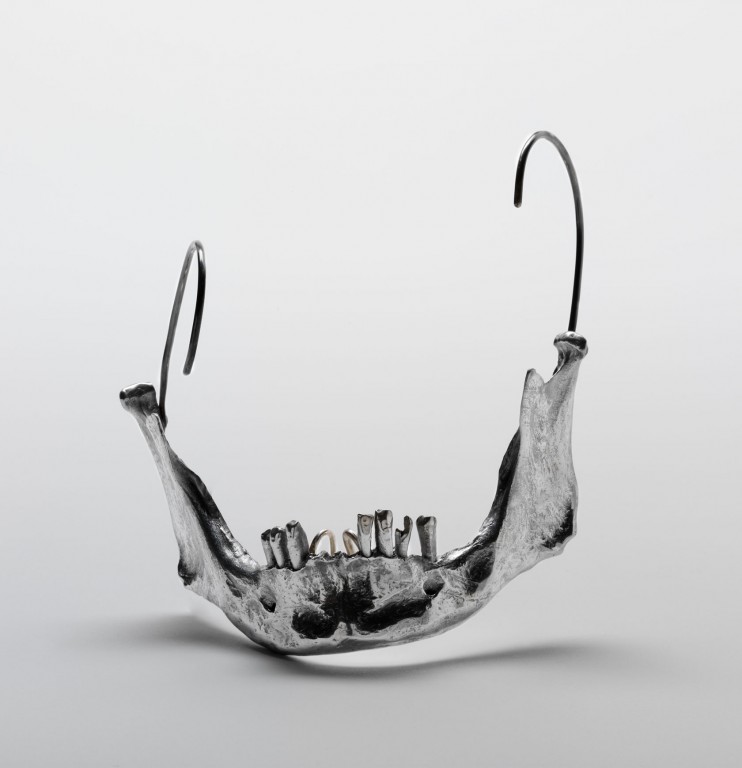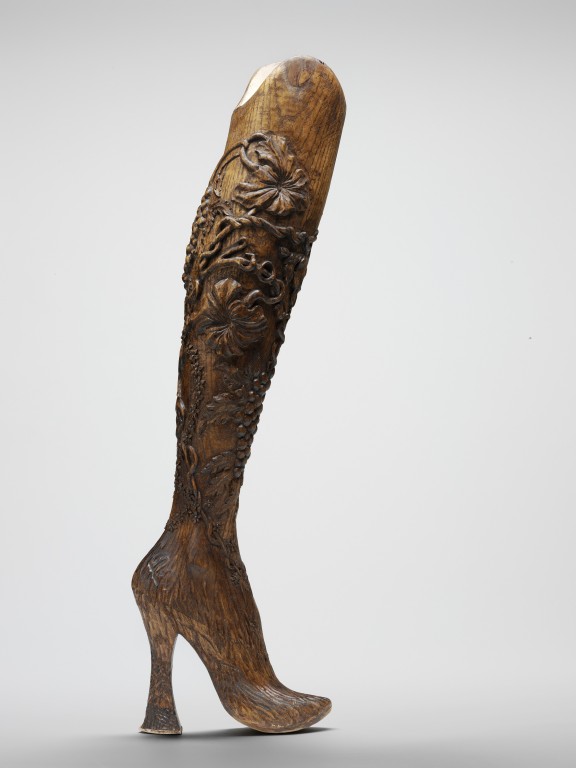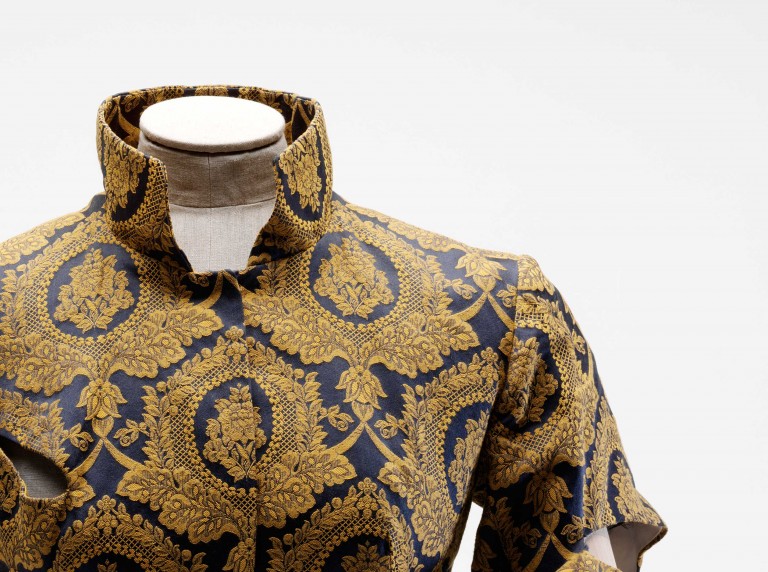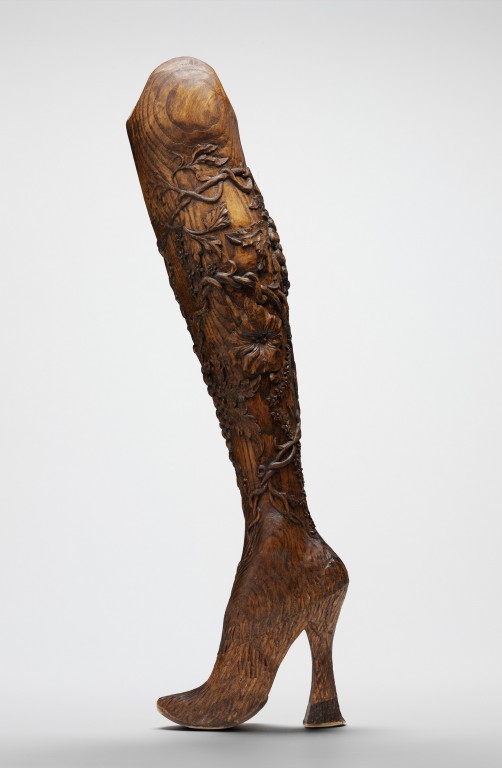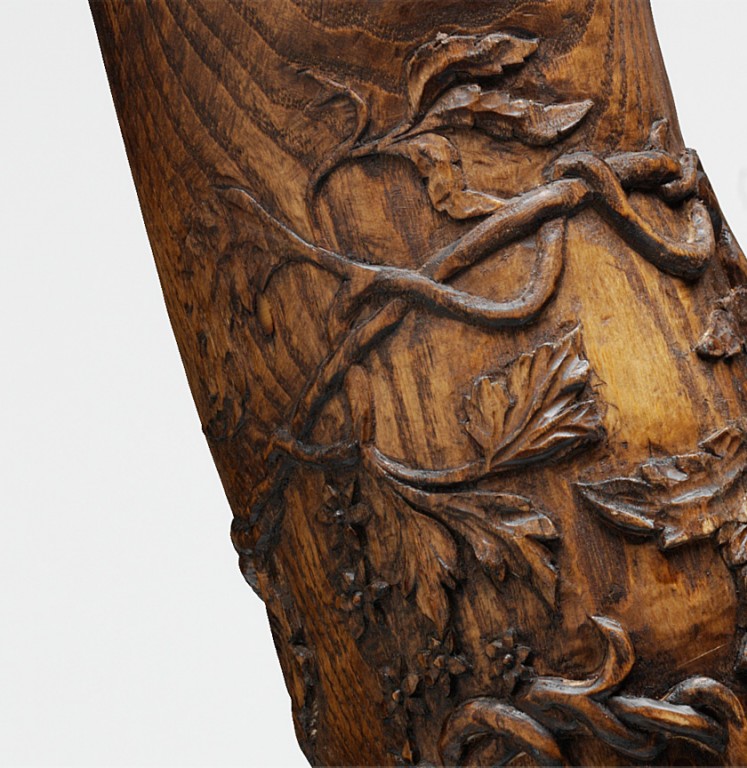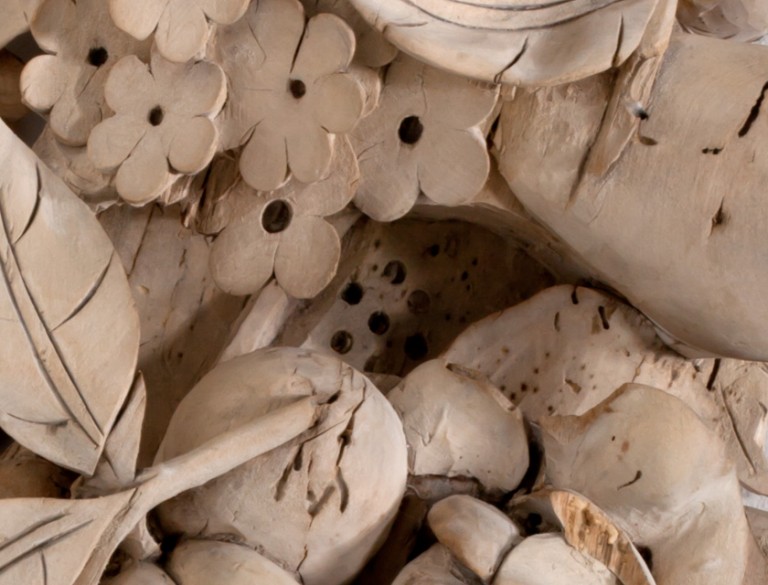Prosthetic legs
Paralympic athlete and double amputee Aimee Mullins opened Alexander McQueen’s thirteenth fashion show, simply titled No. 13 (Spring/Summer 1999), wearing this pair of wooden prosthetic legs.
McQueen had collaborated with Mullins for the September 1998 ‘Fashion-able’ issue of Dazed & Confused magazine, and wanted to create three different pairs of legs for her to wear in the show: one pair in glass, one pair made of Swarovski crystal and a pair in wood. Only the wooden legs were produced and McQueen entrusted the commission to Bob Watts of prosthetic and orthotic centre Dorset Orthopaedic. Watts was asked to create a pair of solid one-block wooden legs, inspired by a Louis XIV-style table and by woodcarvers of the period such as Grinling Gibbons. The sockets which Mullins’ residual limbs fitted into were carved from the inside making McQueen’s commission Watts’s biggest challenge to date. Watts’s skill in crafting comfortable sockets enabled Mullins to wear the prostheses without any additional straps. He chose to use ash wood because of its strength and because it could be intricately carved. Watts hand carved the block and sole to Mullins’s exact measurements. The soles of the prostheses were based on the design of a clog: the bottom of the toe was curved up to enable Mullins to walk smoothly.
The legs were designed as Victorian knee-length boots with a Louis heel, pointed toe and a slim ankle. After finishing the design Watts sent the legs to wood carver and gilder Paul Ferguson who had been instructed by McQueen to carve ‘vines and leaves looking like they were growing up on the wooden prostheses’. The intricate carved decoration replaced the typical laces of a Victorian boot. The one-block structure limited the wearer’s flexibility. Although Mullins received the legs on the day of the show and had only seven hours to learn how to walk in them, she moved confidently and gracefully, appearing twice on the runway.
McQueen was fascinated by Victorian literature, especially that of Charles Dickens who included a character with a wooden prosthetic leg in several of his works such as The Old Curiosity Shop (1840) and David Copperfield (1850). The evolution of prosthetics and the pioneering advances made during First and Second World Wars also interested McQueen. The earliest known example of a prosthetic body part is a wooden toe found on an Egyptian mummy dating back to 710 B.C..

